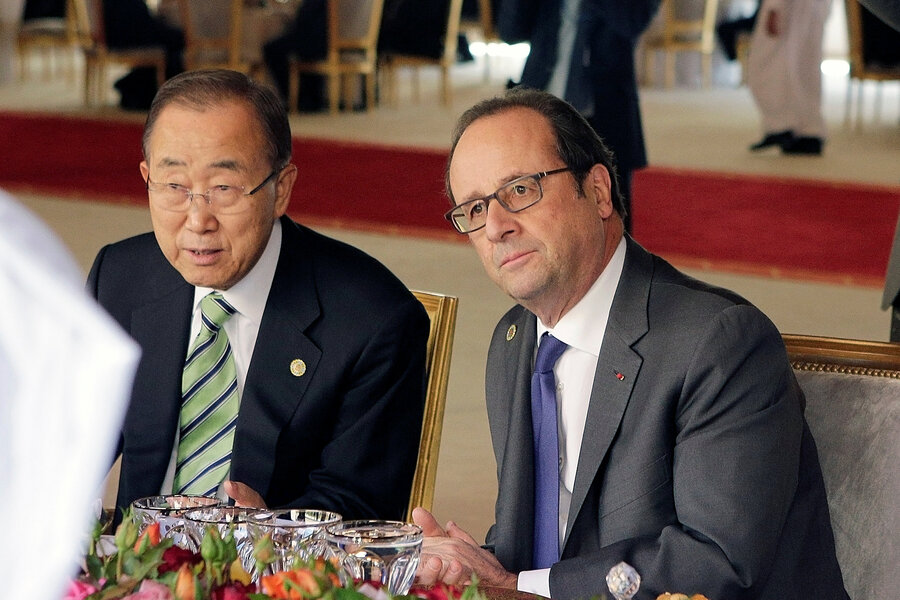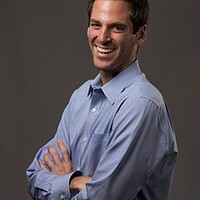Global progress on climate – and now a leadership vacuum
Loading...
| Marrakech, Morocco
A new world of global climate action is coming into view here in Morocco – a world without US leadership on the issue.
The test now is whether global cooperation can proceed and grow at a time when America – in recent years a leader in the push to reduce carbon emissions – has a president-elect who opposes the very concept of climate response.
One of the early indicators of this new world will be whether rich nations continue to honor financial aid pledges to help poorer ones combat rising temperatures. Interviews and statements by climate diplomats at a conference here, reveal several features of the changing landscape:
•Other nations such as China and Germany may step up to heightened leadership roles on climate action, including the challenge of help for less-developed countries.
•The US faces the prospect of being cast as climate deadbeat, as other nation’s seek to coax and pressure the US back toward what they see as necessary participation by the world’s No. 2 carbon-emitting nation (after China).
•A difficult search to raise the cash for aiding developing nations just got even more desperate.
Specifically, rich countries are expected to deliver $100 billion every year beginning in 2020 – a tall task if the US won’t pony up any longer.
“That’s a big question. I don’t think that’s simple to just fill up the gap and say, ‘Well, the US is no longer there, they’ll do with free-riding and all developing countries would pay for the bill.’ That will not work like this,” Laurence Tubiana, France’s chief negotiator, told The Christian Science Monitor.
Why a global climate fund?
The premise behind the climate aid is twofold. First is a practical reason: Stopping carbon dioxide build-up in the atmosphere can only be achieved by addressing emissions on a global scale, and developing nations will be hard-pressed to finance a clean-energy transition on their own. Second is a moral argument: Advanced nations like the US created an outsized share of the greenhouse gases that are affecting Earth’s climate, while the world’s poorest citizens often face the worst effects of warming temperatures.
Publicly, delegates here at the United Nations climate conference are optimistic that a number of countries will step in to offset any US isolationism. Republican President-elect Donald Trump has pledged to scrap US involvement in a landmark global climate agreement reached last year in Paris, and to cancel federal spending on climate change.
Ms. Tubiana suggested international institutions like the World Bank and countries like China could fill in.
Others were less hopeful.
“I have nothing positive to say about the financing. Developing countries are right to worry,” said Kelly Sims Gallagher, a former Obama official who helped negotiate a 2014 bilateral emissions reduction pact between the US and China.
Some fear that American isolationism would give other nations cover to avoid giving money to help poor nations adapt to and mitigate climate change. That issue is one of the thornier flaps that divide post-industrial countries and less developed nations.
'US cannot take a backseat'
“The problem is that the US cannot take a backseat,” Francois Martel, secretary-general of the Pacific Islands Development Forum, told the Monitor. “For a lot of countries, particularly the Pacific Islands, the most vulnerable will be considering other options. Litigation and compensation might be brought back onto the table.”
The manager of one publicly funded climate aid program said the effect of a US pull-back could be widespread. Some multilateral funds like the Global Environmental Facility include explicit burden-sharing agreements, meaning a US failure to donate could let other countries off the hook.
The UN-created Green Climate Fund is attracting the most attention here. Roughly $10 billion has been pledged to the aid program, which aims to be a show of good faith that developed countries will provide the eventual $100 billion in total annual climate finance. The US pledged $3 billion to it last year under President Obama, but it hasn’t yet to disbursed $2.5 billion of that total. Mr. Trump plus the Republican-controlled Congress will likely close the vault on those payments. [Editor's note: This article has been updated to accurately reflect the size of the Green Climate Fund.]
“Now the big question is what’s going to happen to the $2.5 billion remaining,” Tosi Mpanu-Mpanu, Democratic Republic of Congo chief negotiator and chairman of the Least Developed Countries committee, told reporters. “I don’t think I should say something that could antagonize the incoming administration. I know that it’s taxpayer dollars, but it’s taxpayer dollars well spent.”
“I think that will indeed have a quite severe impact,” said Li Shuo, Greenpeace China campaigner, said of the US potentially shutting out the Green Climate Fund.
Germany, China as leaders
Other countries may pick up some of the slack, observers hope. Some of those signs are already emerging. Mr. Li noted that China’s comments this week that it would strengthen cooperation with developing countries was welcomed news.
Ms. Tubiana added that the Paris agreement was designed to withstand derailment by one country, though she noted it would require recalculation of action if the Trump-led US changes course on climate.
“This, of course, needs a reorganization of who does what. Everyone is thinking about that. In particular in how we organize momentum and how we can keep it,” she said. “Cities and regions will have to be more active, and businesses will have to be more active as well. That, in a way, is a reality check for Paris.… I’m confident. But, of course, we’ll see.”
Germany, for example, announced a plan this week to transition to a nearly carbon neutral economy by 2050. More than 30 countries on Tuesday announced a partnership to share information and funding to reach climate commitments made in Paris. Even traditional climate foes like oil-flush Saudi Arabia are making plans to deepen emissions cuts.
China is vying to be the US replacement as global climate leader. Officials there have recently and repeatedly rebuked Trump’s team for flirting with a climate backtrack.
“China is acting on climate because its government believes that it is intrinsically in its own interest to do so. It helped that the United States stepped up at the same time, but China certainly wasn't pushed into the joint agreement. They came willingly and on their own terms,” said Ms. Sims Gallagher, who is now an energy and environmental policy professor at the Fletcher School at Tufts University.
Diplomatic pressures are mounting as well. UN Secretary-General Ban Ki-moon said Tuesday that he’d press Trump on climate, as did French President Francois Hollande. Mr. Mpanu-Mpanu adds that Canada, which is undergoing its own climate reversal under Justin Trudeau following former Prime Minister Stephen Harper’s relative disregard for carbon crunching, could flex on the US to continue acting on climate.
Nations also are pushing ahead with aggressive plans for decarbonizing their economies by 2050. Some environmental groups expect that on Wednesday, the Obama administration’s delegation will float parts of its US blueprint in an event with Canada and Mexico.
But the Trump administration doesn’t have to follow the Obama team’s path. The US negotiating team operating here under Mr. Obama’s State Department has been tight-lipped, though Secretary of State John Kerry is scheduled to make remarks here Wednesday.
“It’s quite clear from what we heard from the chairs of some of the committees that the US delegation is very upset and in a tough position to negotiate,” Mr. Martel said.
And even with US involvement, countries already were flagging on climate aid, UN officials say.
While global spending on climate action increased to $741 billion in 2014 — a 15-percent bump above 2011-2012 levels — the UN says it’s not enough. The UN is also having a difficult time securing sufficient public financial contributions. Some nongovernmental organizations have questioned a (pre-Trump) ministerial plan that outlines public spending comprising $67 billion of the $100 billion of annual climate aid. They contend it’s unwise to rely on private dollars to make up the rest.
On top of that, the UN hasn’t adequately parsed aid from spending that would have come regardless of national commitments.
“There’s been a lot of creative accounting,” Mpanu-Mpanu said.
Too much investment also is still going into high-carbon projects, such as new coal-fired power plants, Patricia Espinosa, the UN’s chief climate official, said last week. And not enough dollars are flowing to adaptation efforts to help countries adjust to climate change now, she added. Ms. Espinosa said that 70 percent of investment is going to mitigation (notably efforts to reduce carbon emissions), while about 25 percent flows to adaptation or “resilience” measures.
“The scale is not yet commensurate with the challenge, particularly with resilience,” she said.
The best chance the US might have for hitting its climate finance marks is to find “another Ted Turner,” Sims Gallagher said, referencing the Atlanta billionaire’s $1 billion donation to the United Nations Foundation.
Outside of generous aristocrats, Tubiana voiced hope that other levers of US society and government will continue to forge ahead on climate finance.
“Just think about the internal dimension of the issue in the US…. It’s many actors, many states, many cities, many businesses, many pension funds,” Tubiana said. “It’s not to say it’s easy – no. It’s difficult, yes. But we don’t have a choice anyway.”
This story was supported by a fellowship from the International Reporting Project.








